Breathing Into Advanced Recovery
by Katlin Arvanis, CPT, RYT 200 on January 24, 2022When you think about breath work what is the image that comes to mind? Maybe an old man sitting cross legged in a turban and diaper. Maybe your brain takes you straight to meditation and you begin to imagine the stereotypical yoga practitioner. What if I told you the face of breath work is changing from that of a limber old man to a former Worlds Strongest Man?
In November 2021 Eddie Hall posted to YouTube a video of his day spent with the world famous Ice Man, Wim Hof. If you haven’t seen it, I highly recommend you check it out . You may recognize the term ‘Wim Hof breathing’ but what exactly is the method and how do you do it? We’ll get into that a bit later. For now let’s dive into the ways breathing techniques can benefit your average Joe, training enthusiast and athletes alike.
The Vagus Nerve and The Domino Effect
Taking control of your breathing, rather than allowing it to be automatic/autonomic, stimulates the parasympathetic nervous system via the vagus nerve. The vagus nerve is the main component of the nervous system, creating feedback from the gut to the brain and is sometimes referred to as the ‘gut-brain link’ which is part of the ‘gut brain axis’. This nerve really creates an ‘everything is connected’ situation as you’ll read below.
A nervous system that can relax is one that will allow quality sleep, systemic recovery and tissue recovery.
Roles and Effects of The Vagus Nerve
- When stimulated it releases a neurotransmitter that helps to increase feelings of calm and focus which is why it helps with mood and anxiety so much.
- When stimulated it can influence the autonomic activities of the gut.
Effects of Intentional Breathing
Digestion
From a mechanical perspective, the expansion of the diaphragm during inhalation creates compression on the internal organs and stomach. The largest effect of this type of compression is when the largest inhalations are taken, expanding the diaphragm to its capacity which can require some intention. Consistent and intentional breathing creates a massaging effect then throughout the abdomen. In turn, you may see improvements in digestion, motility and a reduction in GI distress symptoms. The long term benefits of improved digestion include proper hormone metabolization, better nutrient absorption and improved gut microbiome.
Mood and Anxiety
The vagus nerve helps regulate mood and create a sense of calm. It is this practitioners opinion that a positive feedback loop is established when a regular breathing practice is utilized. Upon the onset of anxiety symptoms and when a breathing technique is used, your body and mind remember the positive experience. Next time anxiety symptoms appear you may be quicker to use a breathing technique and as a result the reduction of symptoms may happen faster. Over time, a harmonious and slightly subconscious effect may take place where it becomes instinctive to breath deeply at the first sign of symptoms. In the best case scenario you are stimulating and healing the nervous system and improving your digestion while treating anxiety symptoms. In the worst case scenario, you are still improving the nervous system its related subsystems. Furthermore, we know when stress and anxiety are managed, sleep quality improves as does hormone metabolization, blood sugar and balance of hunger related hormones.
Seasonal mood disorder may exacerbate already present mood and anxiety symptoms. Trying some breathing techniques in sunlight is a great way to help offset this.
Lung Capacity
The ability to utilize oxygen better, tolerate and remove carbon dioxide better, create stability in the trunk and control breathing can drastically improve not just the obvious cardio session but also weight lifting, conditioning and non exercise activities. Certain breathing techniques may benefit some areas, such as trunk stability or CO2 tolerance, more than others, but I don’t think you can go wrong with any. It’s up to you to decide which techniques might suit your goals the best.
Recovery
At the time this article is written it is the first month of the year. You know what that means – increased work load in the gym, decreased food and the likelihood of an increased to-do list to meet new goals set. Hitting it harder is a commendable feat but this also means you need to recover harder. Especially in seasoned lifters, the load to the nervous system becomes greater. You can make sure your recovery efforts are enough by adding in a breathing technique or two. Not only will you support the nervous system in the moment, you will likely experience better sleep in the evening. We all know improved sleep quality results in better health parameters, as well as muscle gain.
Below is a review of just a few of the many breathing techniques, as well as a few App recommendations to help you get started. When possible I highly recommend supporting local businesses and individuals who teach yoga, guided breathing or meditation. Not only are you supporting an individual, you have the opportunity for even more education and an individualized experience.
The Techniques
Always try out new breathing techniques while seated or lying down. Dizziness can happen and is normal. If that happens, wait until the dizziness dissipates and end your session or resume.
Box Breathing
This technique is used by the Navy SEALs and military personnel to help with calm and focus. It is sometimes referred to as square breathing. Either way, an option is to imagine drawing a square while you perform the 4 steps.
How to:
- Inhale through the nose for 4 seconds trying to expand your lungs and take in a good amount of air
- Hold the inhale for 4 seconds
- Exhale for 4 seconds
- Hold for 4 seconds
- Repeat until you feel a sensation of calm or you’ve reached your desired number of cycles
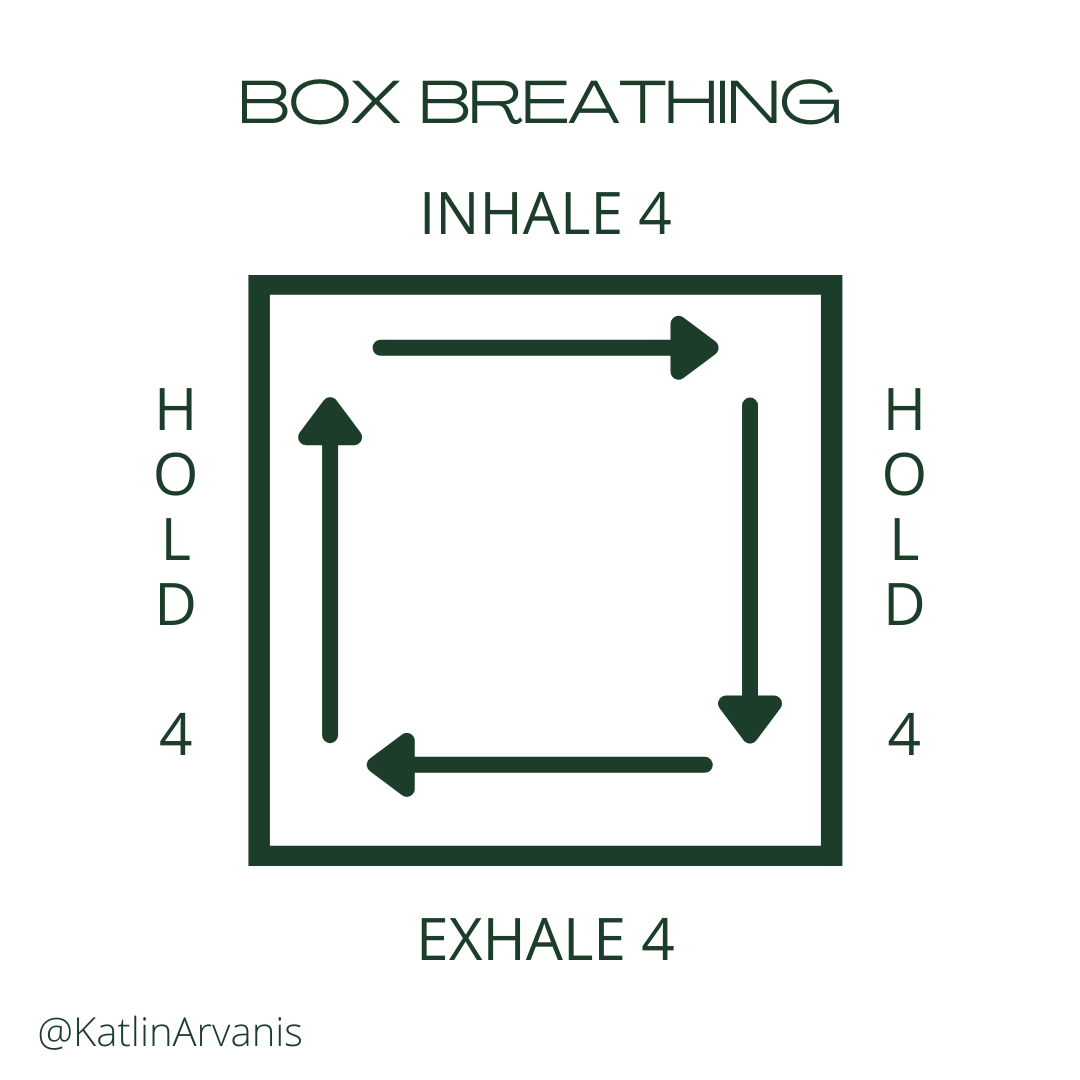
Diaphragmatic Breathing
This technique is sometimes also called belly breathing but this practitioner doesn’t agree with that. The point of diaphragmatic breathing is to use the diaphragm, not the belly. The diaphragm is a bowl shaped muscle that likes directly under your lungs and directly above the internal organs. The origin of the word comes from the Greek words for ‘apart’ and ‘fence’. As you inhale the diaphragm expands outward, like an umbrella opening, and down, to pull air into your lungs. As you exhale the diaphragm then moves inward on itself and upward, to push air out. To feel your diaphragm working place your hands on your low side ribs, just above your waist. Now take a deep inhale trying to push your ribs into your hands. Feel that lateral expansion in the low ribs? That’s your diaphragm pushing them.
How to:
- If it helps, place your hands on your low side ribs and inhale through your nose as much as you can into the low rib space.
- Release your breath without effort, either out the nose or slightly opened lips.
- Repeat until you feel a sensation of calm or you’ve reached your desired number of cycles
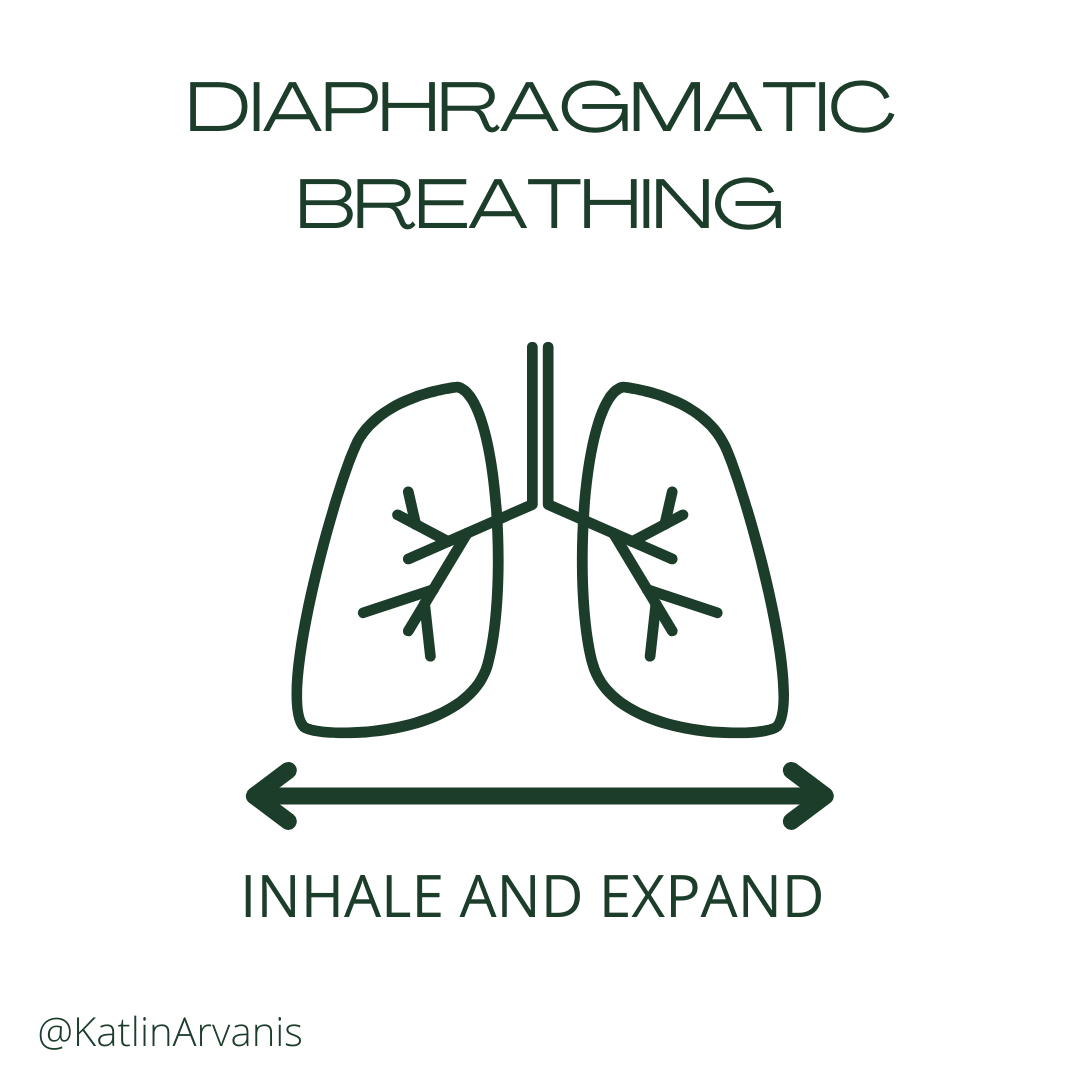
Nasal Breathing or Alternate Nostril Breathing
This ancient practice is one of the many yoga breathing techniques. In yoga studios you may hear this called ‘Nadi Shodhana’. Yoga instructors will tell you the benefits of this practice include focus, calm, respiratory function, balance of brain and energy channels, stimulates nervous system and removes toxins.
How to:
- Take a comfortable and tall seat, making sure your spine is straight and your heart is open
- Relax your left palm comfortably into your lap and bring your right hand just in front of your face.
- With your right hand, bring your pointer finger and middle finger to rest between your eyebrows, lightly using them as an anchor. The fingers you’ll be actively using are the thumb and ring finger.
- Close your eyes and take a deep breath in and out through your nose.
- Close your right nostril with your right thumb. Inhale through the left nostril slowly and steadily.
- Close the left nostril with your ring finger so both nostrils are held closed; retain your breath at the top of the inhale for a brief pause.
- Open your right nostril and release the breath slowly through the right side; pause briefly at the bottom of the exhale.
- Inhale through the right side slowly.
- Hold both nostrils closed (with ring finger and thumb).
- Open your left nostril and release breath slowly through the left side. Pause briefly at the bottom.
- Repeat 5-10 cycles, allowing your mind to follow your inhales and exhales.
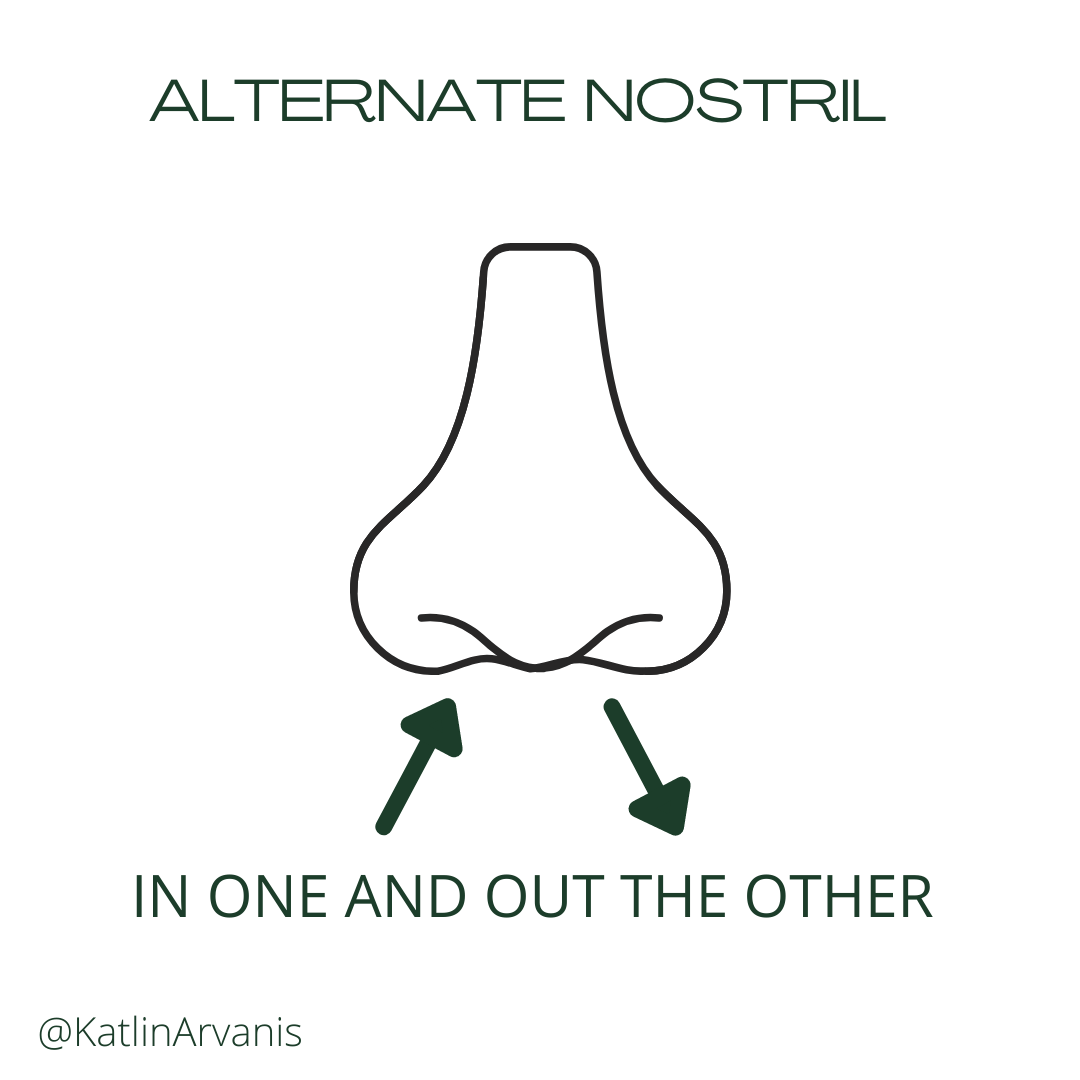
Wim Hof Breathing Method
Wim Hof Breathing is actually one of three pillars of ‘Wim Hot Method’. The other two pillars are cold therapy and commitment. For the purposes of this article we will only explore the breathing method, but the evidence support cold therapy is intriguing. You can find more information and link to published studies on the Wim Hof Breathing Technique as well as cold therapy on the Wim Hof Method website, www.wimhofmethod.com.
By achieving an elevated level of oxygen with his technique, Hof promises his technique offers ‘more energy, reduced stress levels, and an augmented immune response that swiftly deals with pathogens.’
How to:
While sitting in a comfortable place, take 30 quick, deep breaths, inhaling through your nose and exhaling through your mouth. Then, take a deep breath and exhale; hold until you need to breathe in. Inhale again, as deep as you can, and hold it for 10 seconds. Repeat as many times as you like.
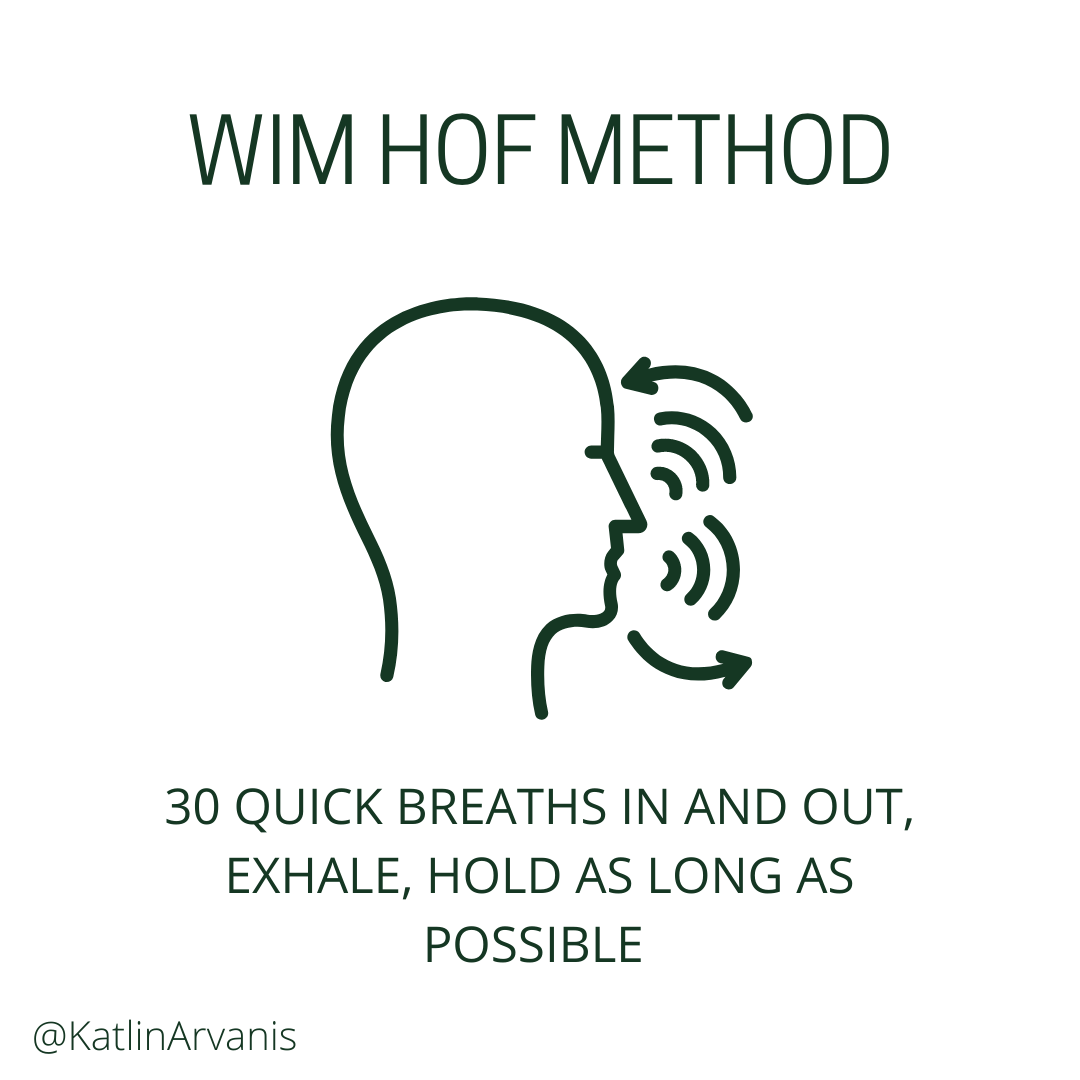
Helpful Apps
The trickiest thing about trying new breathing techniques? The when and how. Thankfully there are now numerous free apps available to help you determine the right type of breathing for you and can guide you through it.
Wim Hof Method App
This app is free to download and comes with a small amount of free tutorials and guided breathing exercises. The breathing exercises are Wim Hof Method and a cool thing is you can adjust the amount of breaths the guide takes you through. After you’ve used all 5 of the guided breathing exercises, 2 exercise and one cold shower guide, you are prompted to buy into the app to continue using it.
The monthly subscription fee is $5.99 but seems come with a plethora of material to make it worth the price.
Breathwrk App
Breathwrk is another free app with a paid subscription option, but with more free content than the Wim Hoff Method App. You can choose from a variety of different themes to fit your breath work needs including ‘calming’, ‘nighttime’, ‘energizing’, ‘perform’, and ‘health’. This app teaches a variety of different breathing techniques. Most of the guided breathing exercises are about 1 minute, but there are several options as long as 13 minutes. This looks to be a great resource for first-timers or those with busy schedules.
The subscription rate is $38.99 per year with a 1 week free trial.
Breethe App
Breethe may have the most variety in content of the three apps listed here, with a library of guided meditations, stories, sounds, hypnotherapy, guided tapping and more. This is another good resource for beginners or busybodies with tons of short short options.
Guided meditations are best for people who have a difficult time getting out of their own head because you are listening to the voice and instructions of the guide. And for those freaked out about ‘meditating’ it seems as though the creator of this app have a great sense of humor and are completely relatable. You can find meditations including “My Boss is a Jerk”, “My Family Drives Me Nuts” and “I’m Stressed About My Weight”.
The subscription rate is $12.99 per month with a 14 day free trial, but you can use the free version as long as you’d like.
Written by Katlin Arvanis CPT, CES, E-RYT 200
For questions and recommendations please feel free to contact the author directly at [email protected].
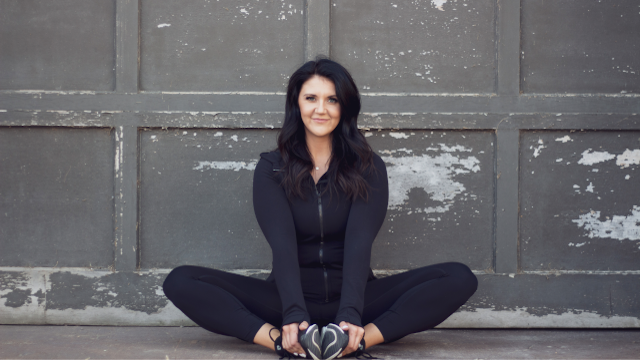
Katlin Arvanis is a Certified Corrective Exercise Specialist, Yoga Instructor and Personal Trainer. Katlin specializes in mobility and recovery and is currently passionate about fascia research and treatment.


